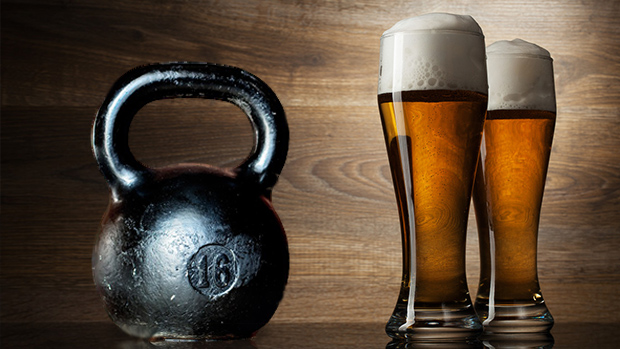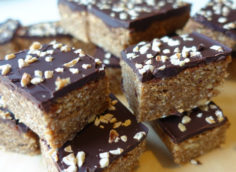Hold onto your nachos with cheesy beef, but it appears that beer is fast approaching "health food" status. (And is it my imagination, or did I just hear a chorus of football-jersey wearing frat boys and former frat boys erupt in a damnable chorus of "Dilly-dilly"?)
Wine gets all the accolades for being healthy, but beer has its own healthful attributes, too. Just like wine, beer is full of polyphenols (over 35 of them) that appear to have heart-protective effects, in addition to a broad spectrum of other benefits.
And while wine contains nutrients like calcium, iron, magnesium, potassium, zinc, and manganese, beer brings niacin, B5, B12, folate, selenium, and silicon to the party. Beer also contains immuno-modulatory peptides and proteins.
But now there's some really surprising new research that shows that beer also improves insulin sensitivity, suggesting that the stereotypical "beer-swilling slob" might just be another case of too much of a good thing.
Researcher Luciana Nogueira recruited 15 healthy men between the ages of 20 and 57 for three 30-day studies. During the first 30-day period, the men followed their usual diet while refraining from drinking any alcoholic beverages.
During the next 30-day period, the men consumed 330 mL of non-alcoholic beer every day.
During the last 30-day period, the men drank 330 mL of good ol' alcohol-containing beer per day.
Surprisingly, there was a big difference between alcohol-free beer and regular beer, the latter having more health benefits:
- Regular beer reduced insulin levels and fasting glucose significantly.
- Regular beer significantly reduced insulin resistance.
The non-alcoholic beer didn't do either of these things. Both types of beer, however, did worsen the HDL/LDL ratio and raised triglyceride levels, which is in contrast to other studies that have shown beer to have beneficial effects on both cholesterol and triglycerides.
(This increase in the HDL/LDL ratio wasn't statistically significant, though, and shouldn't even be a consideration unless your blood chemistry is horrendously out of whack in the first place.)
It appears that drinking regular, alcohol-containing beer for 30 days, in addition to providing an assortment of nutrients, can substantially increase glucose sensitivity and glucose management in healthy men. And that's a good thing, particularly in physique athletes who want to eat lots and have more of what they eat transformed into muscle instead of fat.
Based on this study, at least, it looks like the beneficial effects on insulin sensitivity had more to do with the alcohol itself (since the non-alcoholic beer didn't convey the same benefits) instead of any combination of polyphenols.
The beer used in this study was a pilsner, which tend to be lighter with a strong hop taste and "spicy floral" flavors. Popular beers brewed in this style include Coors and Budweiser.
The amount used was 330 mL per day, which equates to slightly more than 11 ounces – the typical size for a Belgian or German bottle of beer. However, the beer they used appears to be a bit stronger, alcohol-wise, than most popular American beers. Each bottle contained 16 grams of alcohol, while a standard American serving of alcohol is about 14 grams (.6 fluid ounces).
So that means your standard, 12-ounce American beer contains just about the same amount of alcohol used in Nogueira's study, so you can drink your beer with impunity and an air of nutritional superiority while your girlfriend sadly sips away at her pro-diabetic juice drink (loser!).
- Nogueira LC et al. Moderate Alcoholic Beer Consumption: The Effects on the Lipid Profile and Insulin Sensitivity of Adult Men.J Food Sci. 2017 Jul;82(7):1720-1725.




